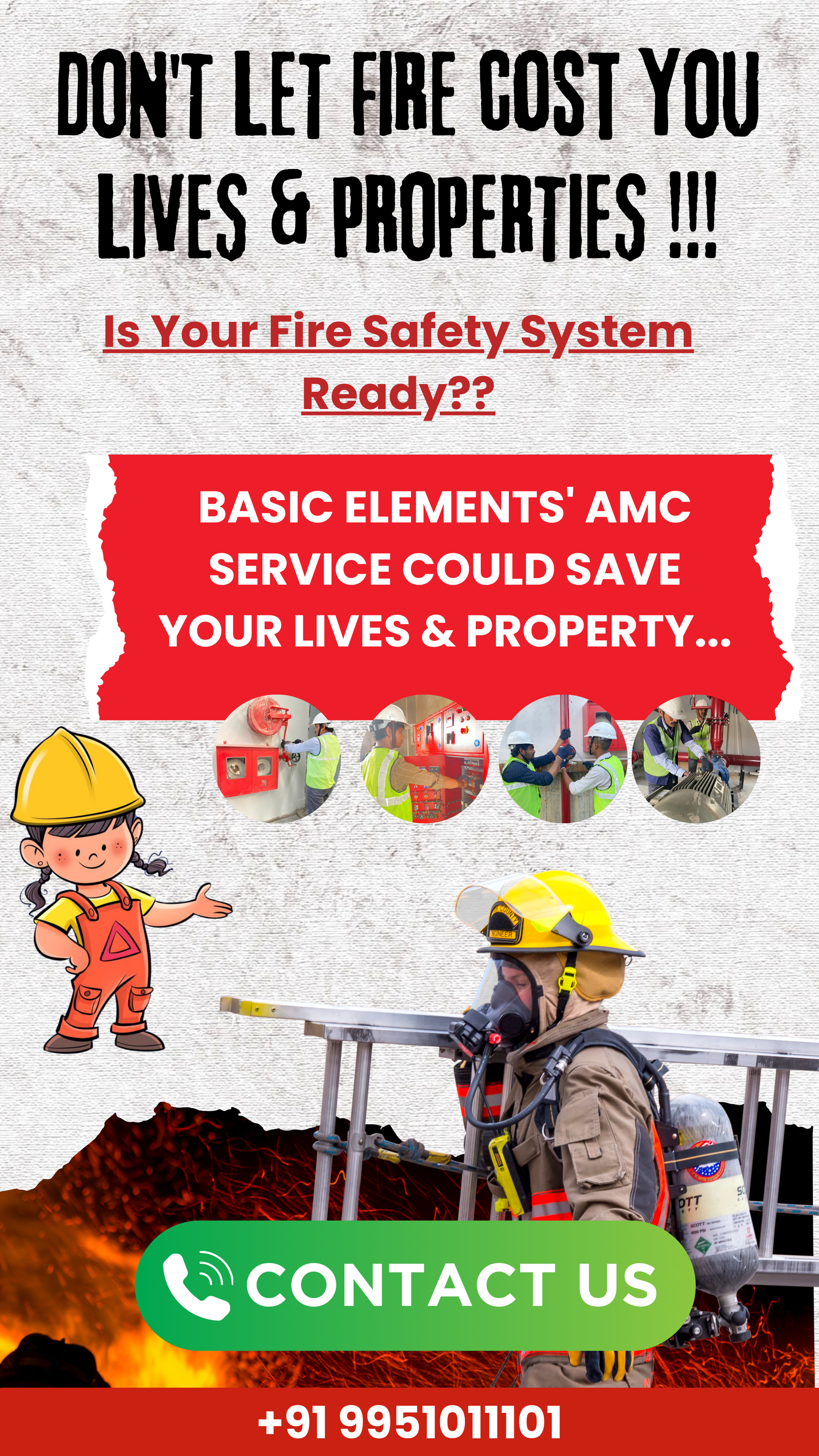As a facility manager or fire safety officer, it’s crucial to understand the different types of fire extinguishers and their classifications. Having the right extinguisher on hand can mean the difference between containing a small fire or allowing it to spread rapidly.
Types of Fire Extinguishers and Their Classifications

Fire extinguishers are classified based on the type of fire they are designed to fight. The classification system uses letters to indicate the appropriate type of fire. Here are the main classes:
Class A Fire Extinguishers
These extinguishers are effective against fires involving ordinary combustible materials like paper, wood, cloth, and plastics. Class A extinguishers contain water or a special monoammonium phosphate dry chemical.
Class B Fire Extinguishers
These are designed for flammable liquid fires, such as those involving gasoline, oil, paint, and grease. Class B extinguishers contain carbon dioxide, dry chemicals, or foam.
Class C Fire Extinguishers
Class C extinguishers are suitable for fires involving energized electrical equipment like motors, transformers, and appliances. They typically contain carbon dioxide or dry chemicals that don’t conduct electricity.
Class D Fire Extinguishers
These specialized extinguishers are used for combustible metal fires, such as those involving magnesium, titanium, or sodium. Class D extinguishers contain dry powder agents specifically designed to smother metal fires.
Class K Fire Extinguishers
Class K extinguishers are specifically designed for kitchen fires involving cooking oils, greases, and fats. They contain a wet chemical agent that cools and helps prevent re-ignition.
It’s important to note that some extinguishers can be used on multiple classes of fires. For example, an ABC dry chemical extinguisher can be used on Class A, B, and C fires, making it a versatile choice for many facilities.
Understanding the Appropriate Uses for Different Fire Extinguisher Types

Knowing which fire extinguisher to use on a specific type of fire is crucial for effective fire suppression and personal safety. Using the wrong extinguisher can potentially make the situation worse or put people at risk. Here’s a guide to help you understand the appropriate uses for different fire extinguisher types:
For Electrical Fires
Electrical fires involve energized electrical equipment and require a Class C or multi-purpose ABC dry chemical extinguisher. These extinguishers contain non-conductive agents that can be safely used on live electrical fires without the risk of electrical shock.
For Grease/Kitchen Fires
Kitchen fires involving cooking oils, greases, and fats require a Class K wet chemical extinguisher. These extinguishers are designed to cool the fire and create a soapy solution that helps prevent reignition, making them ideal for commercial kitchens and restaurants.
For Paper, Wood, or Cloth Fires
Fires involving ordinary combustible materials like paper, wood, cloth, and plastics are classified as Class A fires. These can be effectively extinguished using a water or ABC dry chemical extinguisher.
For Flammable Liquid Fires
Class B fires involve flammable liquids like gasoline, oil, paint, and grease. These require a dry chemical or carbon dioxide extinguisher designed specifically for Class B fires. Foam extinguishers can also be used on Class B fires.
For Combustible Metal Fires
Fires involving combustible metals like magnesium, titanium, or sodium are classified as Class D fires. These require specialized dry powder extinguishers designed specifically for metal fires.
- When using any fire extinguisher, remember the PASS technique:
- Pull the pin
- Aim the nozzle at the base of the fire
- Squeeze the handle
- Sweep from side to side
It’s also important to ensure that the fire extinguisher is rated for the size of the fire you’re attempting to extinguish. Always prioritize personal safety and evacuate the premises if the fire becomes too large or uncontrollable.
By understanding the appropriate uses for different fire extinguisher types, you can be better prepared to respond effectively and safely in the event of a fire emergency.
Proper Fire Extinguisher Maintenance: Inspection, Recharging, and Replacement

Fire extinguishers are a critical piece of safety equipment in any facility, but they require regular maintenance to ensure they function properly when needed. Neglecting fire extinguisher maintenance can render them ineffective or even dangerous in an emergency situation.
Here’s what you need to know about proper fire extinguisher inspection, recharging, and replacement.
Inspection
All fire extinguishers should be visually inspected monthly. Check for any obvious signs of damage, leakage, or obstruction of the nozzle. Ensure the pressure gauge is in the operable range and that the pin and tamper seal are intact. Keep a record of these monthly inspections.
Additionally, fire extinguishers need to undergo more thorough annual inspections by a certified professional. This involves discharging a sample of the extinguishing agent to check for proper flow and evaluating the overall condition of the extinguisher.
Recharging
Fire extinguishers that have been partially discharged or have leaked need to be properly recharged by trained personnel. Attempting to recharge an extinguisher yourself can lead to improper filling and reduced effectiveness.
The recharging process involves removing all remaining pressure and extinguishing agent, thoroughly cleaning the cylinder, replacing any damaged parts, refilling with the correct type and quantity of agent, and performing a leak test.
Replacement
Fire extinguishers have a limited service life, even if they haven’t been used. Most extinguishers need to be replaced or undergo hydrostatic testing after a certain period, typically 5-15 years depending on the type and local regulations.
Extinguishers that have been damaged, heavily corroded, or subjected to a major fire need to be replaced immediately, regardless of their age or condition.
Professional Service
Maintaining fire extinguishers is a job best left to professionals. Many facilities choose to have their extinguishers serviced annually by a certified fire equipment company. This ensures all inspections, recharging, and replacements are handled properly and in compliance with local fire codes.
By following proper maintenance procedures, you can ensure your facility’s fire extinguishers will be ready to perform when you need them most. Don’t take chances with outdated or improperly maintained equipment – make fire extinguisher maintenance a top priority.
Safely Disposing of Used or Expired Fire Extinguishers

Fire extinguishers don’t last forever, and eventually, they will need to be replaced or properly disposed of. Improperly discarding old or used fire extinguishers can be hazardous to the environment and public safety. As a facility manager or fire safety officer, it’s crucial to understand the proper methods for disposing of these units.
Recycling Fire Extinguishers
Many fire extinguisher components, such as the metal cylinder, valve assembly, and extinguishing agents, can be recycled. Recycling not only reduces waste but also allows for the recovery of valuable materials. Contact your local fire equipment service company or recycling facility to inquire about fire extinguisher recycling programs in your area.
Disposal of Non-Rechargeable Units
Disposable fire extinguishers, such as those containing dry chemical agents, must be carefully depressurized and rendered inoperative before disposal. Never attempt to discard a pressurized extinguisher with the household trash, as it could rupture and cause injuries.
The proper disposal method involves removing the valve assembly, completely discharging the remaining contents, and puncturing the cylinder to ensure it cannot be refilled or reused. The empty cylinder can then be taken to a metal recycling facility.
Disposal of Rechargeable Units
Rechargeable extinguishers, like those containing carbon dioxide or water, should be returned to the manufacturer or a authorized fire equipment distributor for safe depressurization and disposal. These units often contain components that can be refurbished or recycled.
Handling Expired Extinguishers
Even if an extinguisher hasn’t been used, it has a limited service life and will eventually expire. Expired units should be treated the same as used extinguishers and properly disposed of or recycled. Never attempt to recharge or use an expired extinguisher, as its effectiveness cannot be guaranteed.
Environmental Considerations
Some fire extinguishing agents, like certain dry chemicals or halon, can be harmful to the environment if improperly released. Follow all local regulations and guidelines for the safe handling and disposal of these materials.
By understanding the proper disposal methods for used, expired, and non-serviceable fire extinguishers, you can help protect the environment, ensure public safety, and comply with all relevant regulations. Always prioritize safe handling practices and consider recycling options whenever possible.
Having the right knowledge about fire extinguishers is essential for effective fire safety as a facility manager or fire safety officer. Understanding the different extinguisher types and their appropriate uses allows you to respond quickly to contain fires.
Properly inspecting, maintaining, and disposing of extinguishers ensures they are always ready and compliant. By prioritizing fire extinguisher education and best practices, you cultivate a culture of preparedness that safeguards lives and property.
The right fire extinguisher knowledge empowers you to uphold your commitment to a safe environment.
Follow our Blogs to know more about Fire Safety








1 thought on “The Essential Guide to Understand types of Fire Extinguishers, Uses, Maintenance”
Pingback: Essential Guide to Fire Fighting Equipment for Safety
Comments are closed.